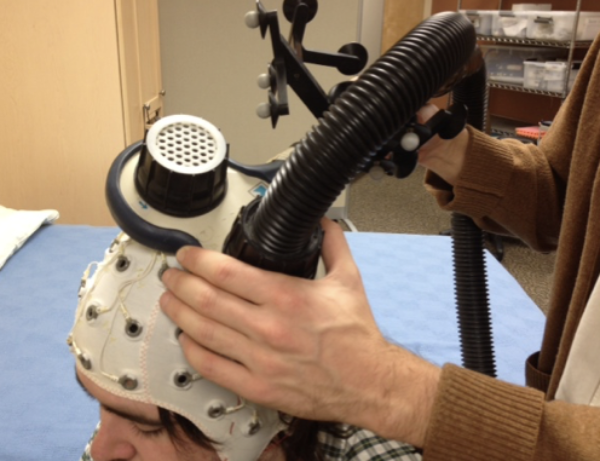Life is full of emotional highs and lows, and sometimes we let emotions from one situation carry on to the next. Perhaps we’ve just enjoyed an activity with a loved one or experienced a negative interaction with a co-worker. But when we let emotions from one event carry on to the next, such emotional spillover from these experiences can color our impressions and behavior in the situations that follow – sometimes for the worse.
Researchers at the Center for Healthy Minds are discovering what happens in the brain when such emotional spillover occurs and, for the first time, are able to pinpoint areas directly responsible.
The findings, featured in the journal Psychological Science and supported by a grant from the National Institute of Mental Health, are part of larger efforts to understand the complexity of the brain and what types of mental training or activities can best improve emotional reactions known to promote higher levels of well-being.
Using Transcranial Magnetic Stimulation (TMS), a technique that produces a magnetic field that can temporarily “knock out” or inhibit activity in specific parts of the brain, the team discovered that when the lateral prefrontal area – a region known for executive function (attention, focus, impulsivity and more) – was inhibited by the stimulation, participants showed more emotional spillover.

In the experiment, they measured this by collecting people’s first impressions of neutral faces they saw immediately after being shown either smiling faces (prompting positive emotions) or fearful faces (prompting negative emotions).
TMS therapy is approved by the FDA for use in people with depression, and this work may shed light on why stimulating parts of the prefrontal cortex is successful in improving the ability to regulate negative emotions.
“It was interesting because participants saw the emotional faces very briefly,” says study leader Regina Lapate, Center for Healthy Minds (CHM) collaborator and current postdoctoral researcher at the University of California, Berkeley. “Yet having their prefrontal cortex disrupted generated spillover onto their unrelated events that followed.”
That is, briefly seeing a negative face made participants perceive a neutral face negatively while briefly viewing a positive face made participants perceive a neutral face positively.
Moreover, this spillover happened without participants’ knowledge. “When asked afterward, they didn’t think they had been influenced by it in their ratings,” Lapate adds. “Emotional spillover can happen without us being aware of it.”
The team discovered that when the lateral prefrontal cortex was not inhibited by TMS, the person did not show spillover when viewing subsequent neutral faces. When the lateral prefrontal cortex was inhibited by TMS, emotional spillover occurred.
Three days later, outside of the laboratory, participants still showed that emotional bias when asked to rate the same neutral faces, suggesting that the negative emotional spillover they first showed in the laboratory produced long-lasting, biased first impressions.
"If your first impression of someone is formed when you’re experiencing emotional spillover from a previous context, that negative impression may stick,” Lapate says.
In addition, other research suggests that mindfulness meditation may improve emotion regulation and connectivity between the prefrontal cortex and emotion-related areas of the brain such as the amygdala. Being able to demonstrate a connection between these two brain areas could help researchers more accurately tailor interventions to target these areas and improve well-being.
“If your first impression of someone is formed when you’re experiencing emotional spillover from a previous context, that negative impression may stick."
“We are excited about this experiment because it demonstrates the causal role of the prefrontal cortex in regulating emotional behavior,” says Richard Davidson, William and James Vilas Professor of Psychology and Psychiatry, who worked on the study and directs CHM. “It invites the possibility that strategies that promote prefrontal engagement may have beneficial consequences for emotion regulation.”
Next on Lapate’s agenda is to test whether the reverse works: Can TMS stimulation that increases neural firing in the prefrontal cortex lead to a decrease in negative emotional spillover? At UC Berkeley, she’ll continue to explore that question as well as how the lateral prefrontal cortex as a whole changes the neural coding for positive and negative information.
Meanwhile, the UW–Madison team will further examine how contemplative practices may change emotional spillover and target these areas as measured by neural activity recorded in a brain scanner.
–Marianne Spoon






